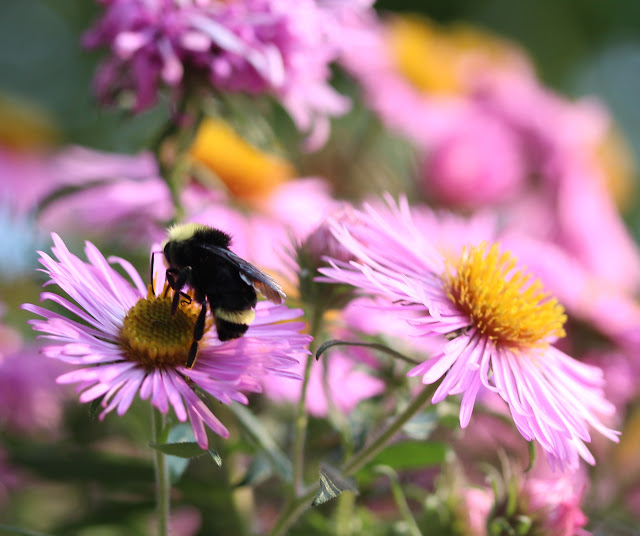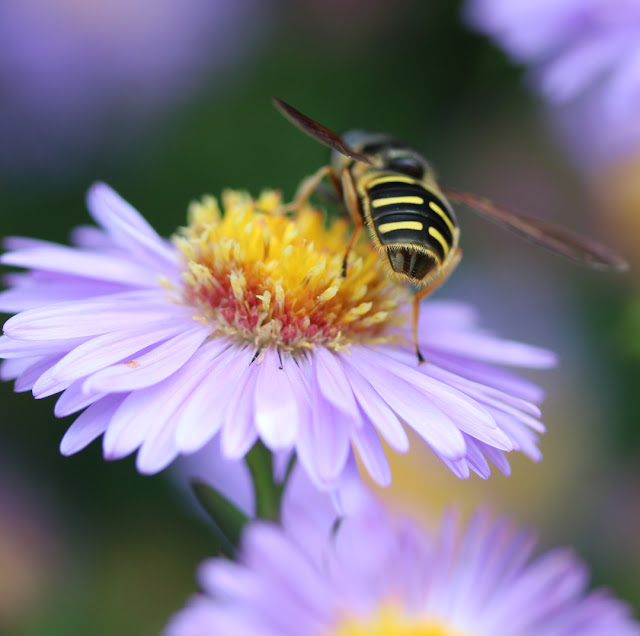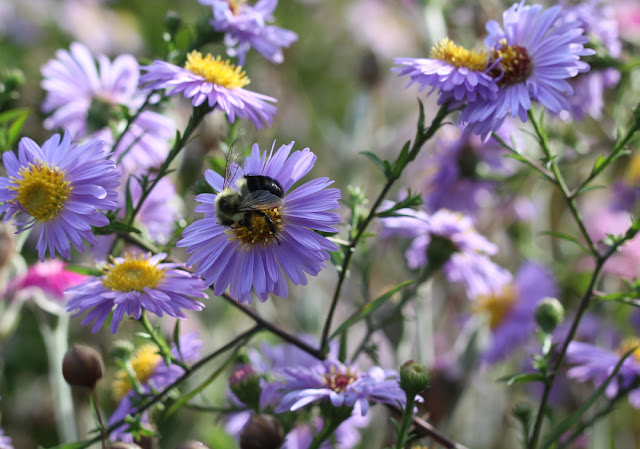It's September and the asters are where it's all happening! A favoured pollinator flower that's blooming into October, asters are a MUST HAVE in any insect friendly garden. Tall, short, purple, pink, and white--native and cultivars are all good to have. Plant them all over the garden, and plant different varieties that will bloom at different times.
My what big eyes you have! This syrphid fly is certainly enjoying the nectar on these shallow composite flowers.
Nope, this guy doesn't have a danger butt. He can't sting you, but even though he's pretending to be a stinging insect.
He hovers, he slurps, he pollinates, but he doesn't bring the sting.
This is an eastern bumble bee also enjoying a sugary treat.
Skippers and cabbage butterflies will nectar on asters.
This critter sure looks like a honey bee, but nope, it's another hover fly, lookin' sweet.
Is it a fly or a bee?
This is the last aster to bloom in the community garden. These sprays of small pink and white flowers on attractive stems are attracting honeybees and small bumblebees.
And if you think that wasp is small, check out this itsy bitsy yellow-faced bee! Hyleaus bees nest in hollow stems and create seals between cells out of a type of cellophane. When you clean up your garden, be careful to leave existing nests in stems and leave a stubble cut for next year's stem-nesting bees.
Home sweet home, bee it ever so umbel. This herb is Ammi visnaga and all sorts of little bees, flies, and wasps love the tiny florets
How many wee bees can you see?
An eastern bumble bee snacks on goldenrod nectar. There are many species of goldenrod to choose from to plant in your garden. Choosing more than one kind is a good idea because they will likely bloom at slightly different times.
Here's another lovely wasp enjoying the fennel blossoms. The hollow stems of fennel make great nesting habitat for bees. Once the seeds are mature, you can harvest them for cooking and planting but bee sure to leave some behind for nesting material. For more info on protecting nesting habitat for bees, check out this fabulous resource from the University of Minnesota: https://www.beelab.umn.edu/wild-bees/wild-bees-and-houses




















No comments:
Post a Comment